Shark Tagging with Our Lady of Lourdes Acadamy
By Christopher Brown, RJD Intern
As dawn broke on Saturday, November 7, 2015, eight sharky RSMAS students and one fearless lab manager awoke to the call of the sea. The RJD team assembled at Diver’s Paradise in Crandon Marina at 8:00am to begin loading the boat with the shark-friendly fishing gear that is utilized to conduct tagging and sampling procedures. Everyone was in a great mood because the forecast for the day called for perfect fishing weather. Once the high school students from Our Lady of Lourdes Academy arrived, brief introductions were made, and the crew set out for an eventful day of shark tagging!
As Captain Nick Perni set course for fishing grounds south of Key Biscayne, and the RJD crewmembers cut bait and prepared the drumlines for deployment, lab manager Christian Pankow briefed the high school group on how the fishing equipment is deployed and retrieved throughout an entire day of fieldwork. Even though Our Lady of Lourdes Academy are old hands at tagging and sampling procedures, they were surprised to learn that fish traps are now being utilized by the RJD team to investigate fish morphologies and population assemblages associated with the presence or absence of shark populations. The two fish traps were deployed south of Stiltsville, a group of wood stilt houses positioned on the edge of Biscayne Bay along the sand banks of the Safety Valve. Then, after watching RJD Intern Samantha Owen demonstrate how to safely and properly cast out the baited circle hook and line, Our Lady of Lourdes Academy students helped deploy the remaining nine drumlines.
While the lines “soaked” for an hour, the students assisted with taking environmental measurements, including the salinity and dissolved oxygen content of the surrounding ocean water. Lab manager Christian Pankow gave another briefing to Our Lady of Lourdes Academy to prepare them for the participatory day of shark research, which would include fin clips, measuring, and collecting vital tissue samples and data. However, the briefing was cut short when a blacktip shark was spotted breaching around the first research buoy, which meant a shark was on the line! The first group of students assembled to assist with data collection as the RJD team sprung into action. The 1.46 meter (4.79 ft) blacktip shark, which was one of the smallest sharks of the day, was swiftly and carefully secured onto the stern of the boat and the water pumped was inserted into the shark’s mouth. RJD graduate student Jake Jerome collected a blood sample from the caudal vein and Our Lady of Lourdes Academy students assisted with taking morphological measurements and inserting a dart tag into the shark’s dorsal fin. After completing a successful workup, the blacktip shark was released back into the water in great condition. The breaching blacktip shark was an amazing sight to see and was only the beginning of a fantastic day of shark tagging.
The largest shark of the day was a 2.00 meter (6.56 ft) great hammerhead that was caught while pulling in the second round of drumlines. Great hammerhead sharks are easily stressed and become quite delicate when kept on the line for an extended period of time, so the students watched from the top deck as the RJD team worked up the shark in less than four minutes. RJD graduate student Jake Jerome was able to collect a blood sample from the caudal vein of the great hammerhead for his ongoing Masters’ research, and the crew worked efficiently enough to conduct an entire workup procedure before the great hammerhead needed to be returned to the water.
In total, the RJD team landed a 2.00 meter (6.56 ft) great hammerhead shark, a 1.67 meter (5.47 ft) nurse shark, a 1.25 meter (4.10 ft) black nose shark, and six blacktip sharks ranging from 1.18-1.71 meters (3.87-5.61 ft). Each shark was swiftly and carefully brought to the boat and secured on the platform for a brief sampling and tagging procedure. It is safe to say that Our Lady of Lourdes Academy students are now well practiced in tagging, sampling, and morphological measurement techniques. One of the procedures performed by the students included the nictitating membrane reflex test. The nictitating membrane is a clear, inner eyelid that protects the eye of a shark during feeding events. The reflex of the nictitating membrane is one visual factor that can be used to determine the stress impairment of sharks.
After the remaining drumlines were brought on board, the crew finished the day by checking the fish traps set earlier in the morning. A series of morphological measurements and images was taken of each of the several bony fish caught in the fish traps for future analysis. Overall, the RJD team had a fantastic day out on the water with Our Lady of Lourdes Academy. We hope they enjoyed the opportunity to participate in a day filled with exceptional scientific research and education, and we cannot wait for them to join us again on future shark tagging trips.

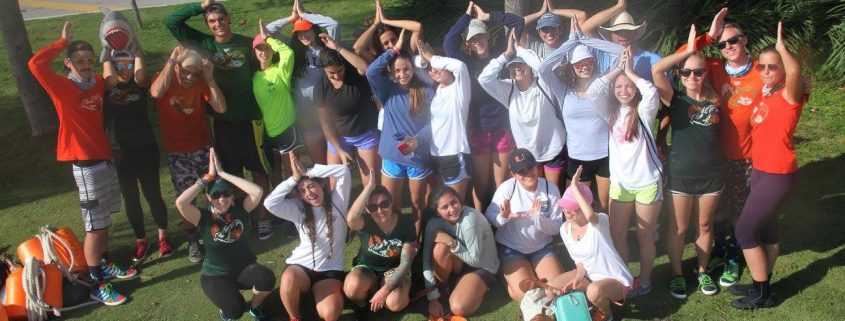
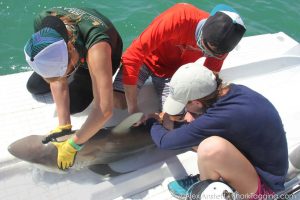
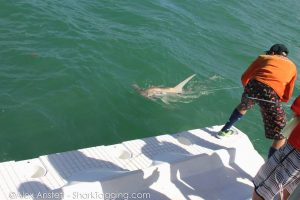
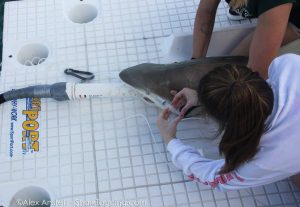
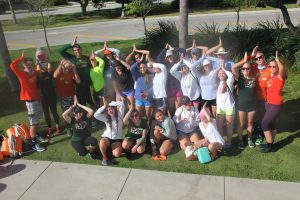


Leave a Reply
Want to join the discussion?Feel free to contribute!